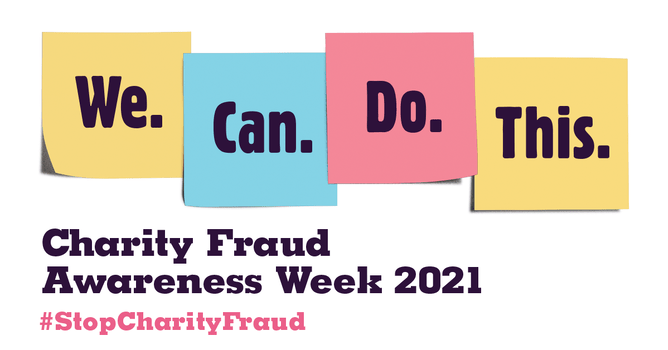18-22 October 2021
Charity Fraud Awareness Week is an award-winning campaign organised by a global partnership of charities, regulators, law enforcement, representative and umbrella bodies, and other not-for-profit stakeholders.
The overall goal of the week is to promote awareness of the sector’s vulnerability to fraud and cybercrime, as well as provide a safe space for charities and their supporters to discuss fraud and how to protect your business from it.
How does charity fraud happen?
Charities, like all other industries, are vulnerable to fraud and can be an incredibly easy target for thieves. All charities, no matter how big or small, can fall victim to fraud. Therefore, it is important to know the most prevalent types of charity fraud, and how to prevent them:
False invoicing
External fraudsters use false invoicing to steal money from charities. To obtain money, false invoices are created for items or services that have not been received. In most cases, invoices are paid because staff assume these services or goods must have been collected. In order to prevent this, charities must make sure they verify all services or goods have been received by those that have requested them before the invoice is paid.
Money laundering scams
Money laundering scams often take the form of external fraudsters donating a large sum of money with complicated terms and conditions. Usually, the charity is asked to send a large sum of the donation to another charity. Unknown to the charity, the “donation” itself is made with a stolen credit card, and the bank details of the other charity are the fraudster’s own bank details. This leaves the charity complicit in the act of fraud should the transaction go through. To tackle this, charities need to look out for complex terms and conditions made by donors.
Unfortunately, the most common form of charity fraud is not external, but internal. Often, there are not enough internal controls placed within charities to verify the actions of employees, which leaves fraud unnoticed until it is too late.
Money transfers
Employees can authorise payments to personal bank accounts through the creation of fraudulent invoices. In a similar manner to external fraudsters, employees create false invoices for items and services that have not been received, which are then paid into personal bank accounts. This is easy to achieve if the member of staff is left unchecked by other employees in the charity. Therefore, it is crucial to have a minimum of two people overseeing finances – this usually takes the form of a treasurer and finance manager.
False expenses
Internal fraud can also be committed by claiming non-existent and inflated expenses or overtime. Expense claims must be described accurately and concisely on claims forms, must be accompanied by a receipt, and submitted within a reasonable time frame.
How to prevent charity fraud
There are preventative measures charities can take before any fraudulent activity takes place. These include:
- Developing an anti-fraud policy (gov.uk has created some handy templates for use here)
- Reviewing existing financial procedures – are there any weaknesses?
- Be aware of the latest scams taking place – research the newest instances of charity fraud online
How to get involved
If you would like to get involved yourself, there are many ways to do so:
- Charities can sign up to the new fraud pledge
- Use and share the free online resources
- Join one of the planned webinars
- Write a blog for your website
- Take part in the social media campaign using #StopCharityFraud
For more information on how to get involved, visit https://preventcharityfraud.org.uk.

